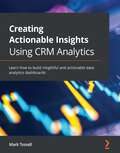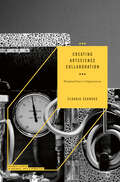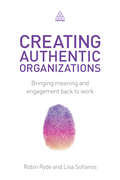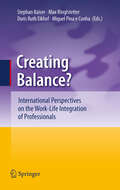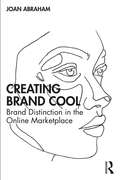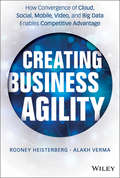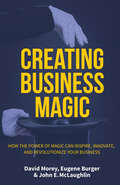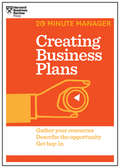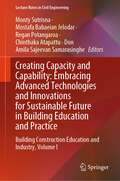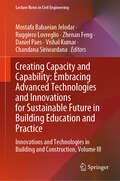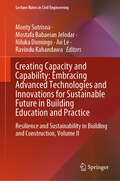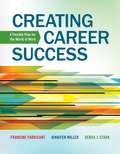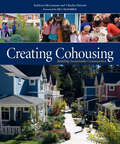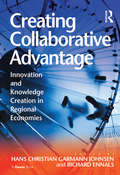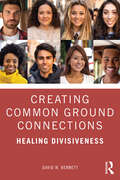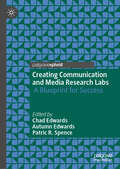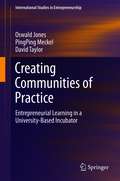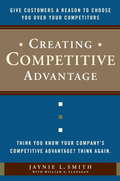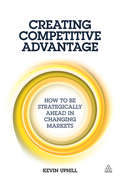- Table View
- List View
Creating Actionable Insights Using Tableau CRM: Learn how to build insightful and actionable data analytics dashboards
by Mark TossellLeverage Tableau CRM to generate valuable business insights and solve business problems efficientlyKey FeaturesExtract, combine, transform, and visualize your data to derive business insights using Tableau CRMGain hands-on experience as you walk through practical dashboard use cases in Tableau CRMLearn how to build best-in-class dashboards from a Tableau CRM thought leaderBook DescriptionTableau CRM, formerly Einstein Analytics, is a powerful and versatile data analytics platform that enables organizations to extract, combine, transform, and visualize their data to create valuable business insights. Despite being a highly capable tool and in high demand in the industry, proficiency in Tableau CRM skills is hard to find.Creating Actionable Insights Using Tableau CRM provides a hands-on approach to Tableau CRM implementation and associated methodologies that will have you up and running and productive in no time. The book provides you with detailed explanations of essential concepts to help you to gain confidence and become competent in using the Tableau CRM platform for data extraction, combination, transformation, visualization, and action. As you make progress, you'll understand what Tableau CRM is and where it provides business value. You'll also learn how to bring your data together in Tableau CRM, build datasets and lenses for data analysis, create effective analytics dashboards for visualization and consumption by end users, and build dashboard actions that take the user from data to insight to action with ease.By the end of this Tableau book, you'll be able to solve business problems using Tableau CRM and design, build, test, and deploy Tableau CRM analytics dashboards efficiently.What you will learnImplement and configure Tableau CRM from scratchBuild your first Tableau CRM analytics app and embed your Tableau CRM dashboards in Salesforce to enhance user adoptionConnect Salesforce and external data with Tableau CRM and create datasetsCreate a data recipe and get familiar with the recipe UIBuild a custom dashboard in Tableau CRM using the dashboard editorUse lenses to create a Tableau CRM analytics dashboardConfigure and implement data security and governanceBuild configured record actions to automate data directly in SalesforceWho this book is forThis book is for data analysts, business analysts, BI professionals, and Salesforce users who want to explore Tableau CRM's capabilities and features. Basic knowledge of Salesforce and data analytics is assumed to get the most out of this book.
Creating Arc-of-Career Flexibility: Keeping Talented Women on the Road to Success
by Sylvia Ann HewlettAccording to the author, there are six essential elements that need to gain real traction if a company is to fully realize female talent over the long haul. This chapter addresses one of these essential elements: policies that provide flexibility over the arc of a career and allow women to ramp up after taking time out of the paid workforce.
Creating ArtScience Collaboration: Bringing Value to Organizations (Palgrave Studies in Business, Arts and Humanities)
by Claudia SchnuggHow can artist-scientist collaboration be of value to science and technology organizations? This innovative book is one of the first to address this question and the emerging field of art-science collaboration through an organizational and managerial lens. With extensive experience collaborating with and advising institutions to develop artist in residency programs, the author highlights how art-science collaboration is such a powerful opportunity for forward-thinking consultants, managers and institutions. Using real-life examples alongside cutting edge research, this book presents a number of cases where these interactions have fostered creativity and led to heightened innovation and value for organizations. As well as creating a blueprint for successful partnerships it provides insights into the managerial and practical issues when creating art-science programs. Invaluable to scholars and practitioners interested in the potential of art-science collaboration, the reader will be shown how to take an innovative approach to creativity in their organization or research, and the ways in which art-science collaborations can mutually benefit artists, scientists and companies alike.
Creating Authentic Organizations
by Robin Ryde Lisa SofianosIn the complex and global economy it's more important than ever that we recognize and respond to the need for employees to bring their authentic selves to work. Doing so can mean increased innovation, productivity, more thoughtful risk taking, a sense of responsibility and increased adaptiveness to change.Creating Authentic Organizations works beyond the limited remit of authentic leadership and shows how this concept can and should be applied to your workforce. With simple and powerful models and strategies it will show you how to ensure more authentic dialogue, both between employees to discuss smaller issues and also to ensure open and meaningful discussion around threats and challenges. Bold and cutting edge, it offers a simple framework for a new set of management principles relating to self-management, empowerment and the freedom to operate. By re-framing the role of management, Creating Authentic Organizations will help you implement real meaning at work and improve organizational resilience.
Creating Balance?: International Perspectives on the Work-Life Integration of Professionals
by Max Josef Ringlstetter Stephan Kaiser Miguel Pina e Cunha Doris Ruth EikhofA satisfactory and healthy integration of work with other life domains is one of the key challenges of modern society. Work-life balance and work-life integration have become focal points of today's human resource management practice and theory. Professionals who have been described as "extreme workers" regarding their work hours and engagement are under particular pressure to balance work and "the rest of life". This collection maps the increasingly extensive discussion of work-life issues for professionals and discusses key aspects in depth. What is work-life integration? What are the specific challenges for professionals? How do they manage their blurred work-life boundaries? How can companies intervene? Internationally leading authors discuss antecedents and individual and organizational outcomes of work-life integration, gender-specific perspectives and challenges as well as the use and usefulness of corporate work-life balance initiatives. In five sections distinguished researchers from across the world present experiences and research findings to provide a compendium of academic and applied research on the work-life integration of professionals. Cutting-edge research and novel theoretical perspectives make this collection a source of knowledge and inspiration for academic and business audiences interested in work-life integration issues in general and in the case of professionals in particular.
Creating Brand Cool: Brand Distinction in the Online Marketplace
by Joan AbrahamIn this intriguing blend of branding how-to and business memoir, an industry pioneer presents the thought process and tools to create a successful Ecommerce business by developing a distinct emotional attraction to a brand, beyond individual product offerings. Leveraging her 26 years of experience in online marketing and branding, Joan Abraham reveals the thought process behind successfully addressing today’s marketing challenge: clearly defining the business’s brand essence using its owned social media channels to personalize the full character of the brand. Creating Brand Cool addresses the importance of developing a unique state of being that personally resonates with today’s consumer. Abraham energizes the creative and strategic thinking for attracting and maintaining brand loyalty when the competition is a click away. Appealing to branding and social media marketing professionals, as well as students in these fields, this book is a primer for building an online community and distinguishing a brand from the competition. It is relevant to all types of business, from small businesses to globally recognized brands.
Creating Breakthroughs at 3M
by Eric Von Hippel Stefan Thomke Mary SonnackMost senior managers want their product development teams to create breakthroughs--new products that will allow their companies to grow rapidly and maintain high margins. But more often they get incremental improvements to existing products. That's partly because companies must compete in the short term. Searching for breakthroughs is expensive and time consuming; line extensions can help the bottom line immediately. In addition, developers simply don't know how to achieve breakthroughs, and there is usually no system in place to guide them. By the mid-1990s, the lack of such a system was a problem even for an innovative company like 3M. Then a project team in 3M's Medical-Surgical Markets Division became acquainted with a method for developing breakthrough products: the lead user process. The process is based on the fact that many commercially important products are initially thought of and even prototyped by "lead users"--companies, organizations, or individuals that are well ahead of market trends. Their needs are so far beyond those of the average user that lead users create innovations on their own that may later contribute to commercially attractive breakthroughs. The lead user process transforms the job of inventing breakthroughs into a systematic task of identifying lead users and learning from them. The authors explain the process and how the 3M project team successfully navigated through it. In the end, the team proposed three major new product lines and a change in the division's strategy that has led to the development of breakthrough products. And now several more divisions are using the process to break away from incrementalism.
Creating Business Agility
by Alakh Verma Rodney HeisterbergCreating Business Agility: How Convergence of Cloud, Social, Mobile, Video, and Big Data Enables Competitive Advantage provides a game plan for integrating technology to build a smarter, more customer-centric business. Using a series of case studies as examples throughout, the book describes the agility that comes from collaborative commerce, and provides key decision makers the implementation roadmap they need to build a successful business ecosystem. The focus is on Business Agility Readiness in terms of the five major changes affecting the information technology landscape, and how data-driven delivery platforms and decision-making processes are being reinvented using digital relationships with a social business model as the consumer world of technology drives innovation and collaboration.Cloud computing, social media, next-gen mobility, streaming video, and big data with predictive analytics are major forces now for a competitive advantage, and Creating Business Agility provides leaders with a roadmap for readiness. Business leaders tasked with innovation and strategy will find that Creating Business Agility provides important insight from an informed perspective.
Creating Business Magic: How the Power of Magic Can Inspire, Innovate, and Revolutionize Your Business
by Eugene Burger David Morey John E. McLaughlinAchieve Exceptional Results and Beat Your Competition"… how the power of magic can ignite your own imagination, power through barriers, and get way ahead of any competition." ?David Copperfield, American magician#1 New Release in Organizational ChangeFirst comes the magic, and then the magic becomes the realityWe are all capable of magic. You may think you know what magic is. Abracadabra, hocus-pocus. Forget about it. Magic is what human beings do. It’s just that some do it a lot better than others.Key business strategy secrets from the world's greatest magicians. This book takes everything that three remarkable authors?a corporate strategist, a former acting CIA director, and a world-renowned magician?have learned about magic and packs it into a unique framework that captures the best of this art form. Then the book relates it directly to key lessons applicable to a wide variety of business enterprises. The authors’ objective is not to create a new generation of magicians, but to adapt nine strategies of the world’s greatest magicians; bolstering innovation, energizing leadership, and sparking business success.Magic and disruptive innovation. Each chapter opens with a scenario depicting a pivotal historic moment in magic (think Harry Houdini, Doug Henning, Penn and Teller, David Copperfield) and uses it as a starting point to explore how the magical technique employed can create a fertile environment for industry, disruptive innovation, and propel a company light years ahead of the competition.Learn how to:Anticipate the next trendsCreate remarkable new productsLaunch marketing and advertising campaigns that will mesmerizeMake dazzling sales presentationsResolve seemingly unsolvable business dilemmasInspire teams with resilient change leadershipIf you have read Creating Magic by Lee Cockerell or Bored and Brilliant by Manoush Zomorodi, you'll want to read Creating Business Magic.
Creating Business Plans
by Harvard Business ReviewA well-crafted business plan generates enthusiasm for your idea and boosts your odds of success-whether you're proposing a new initiative within your organization or starting an entirely new company. Creating Business Plans quickly walks you through the basics. You'll learn to: Present your idea clearly Develop sound financial plans Project risks-and rewards Anticipate and address your audience's concernsAbout HBR's 20-Minute Manager Series:Don't have much time? Get up to speed fast on the most essential business skills with HBR's 20-Minute Manager series. Whether you need a crash course or a brief refresher, each book in the series is a concise, practical primer that will help you brush up on a key management topic.Advice you can quickly read and apply, for ambitious professionals and aspiring executives-from the most trusted source in business. Also available as an ebook.
Creating Business Plans (20-Minute Manager Series)
by Harvard Business School PublishingA well-crafted business plan generates enthusiasm for your idea and boosts your odds of success#151;whether you’re proposing a new initiative within your organization or starting an entirely new company. Creating Business Plans quickly walks you through the basics. You’ll learn to: #149; Present your idea clearly #149; Develop sound financial plans #149; Project risks#151;and rewards #149; Anticipate and address your audience’s concerns About HBR's 20-Minute Manager Series: Don't have much time? Get up to speed fast on the most essential business skills with HBR's 20-Minute Manager series. Whether you need a crash course or a brief refresher, each book in the series is a concise, practical primer that will help you brush up on a key management topic. Advice you can quickly read and apply, for ambitious professionals and aspiring executives#151;from the most trusted source in business. Also available as an ebook.
Creating Business Unit Synergy
by Robert S. Kaplan David P. NortonCorporations consist of a collection of divisions and business units that may compete in different industries, have different customers, and employ different strategies. Executives must determine how they add value to their collection of business units so that the whole is greater than the sum of its parts. Using case studies, this chapter illustrates a broad spectrum of approaches used by organizations to achieve synergy across their units.
Creating Business and Corporate Strategy: An Integrated Strategic System (Routledge Focus on Business and Management)
by Adyl AliekperovBusinesses need strategies that determine the direction of functioning and further development. If a company deals with several multifaceted businesses, each of them subsequently requires their own strategy. The issue of strategy creation and realization is a key factor that must receive the closest possible attention. In order to assure victory and be thoroughly prepared for various directions and situations that may arise, companies create their own unique strategies. This book is primarily aimed at suggesting the necessary repertoire of knowledge and skills for strategy creating with the help of the TASGRAM integrated system – Thinking, Analyzing, Strategy, Goals, Risks, Actions, and Monitoring. The main outcome of TASGRAM is a combined strategic table: business strategy, corporate strategy, goals, risks, actions, and monitoring. Each element in TASGRAM has a concrete goal and it helps users become more focused. Creating Business and Corporate Strategy: An Integrated Strategic System offers a new tool for company strategy creation, showcasing various cases and examples based on theory and practice. Unlike the existing tools, the suggested system of strategy creation is simpler and definite. Its main purpose is to help create and further develop the created strategy, making this book especially valuable to researchers, academics, practitioners, and students in the fields of strategy, leadership, and management.
Creating Capacity and Capability: Building Construction Education and Industry, Volume I (Lecture Notes in Civil Engineering #562)
by Regan Potangaroa Monty Sutrisna Mostafa Babaeian Jelodar Chinthaka Atapattu Don Amila Sajeevan SamarasingheThis three-volume book is the proceeding of the 46th Australasian Universities Building Education Association (AUBEA) 2023 Conference which brings together papers on construction and built environment education and practice. This particular conference theme, “Creating Capacity and Capability: Embracing Technologies and Innovations for Sustainable Future in Building Education and Practice” is closely related to a flagship national research programme funded by the Government of New Zealand, known as the CanConstructNZ research programme, aiming to balance the capacity and capability in the construction industry and the national pipeline of construction projects. The capacity and capability of our construction industry in fulfilling the construction needs of the whole nation are reflected in the national pipeline of construction projects and have long been recognised as one of the main challenges facing the construction sector. The practices and education of building and construction play an important role in determining the capacity and capability of the construction industry. Within the context of achieving sustainable future and embracing advanced technologies to create capacity and capability in the construction sector, various concepts, research, and innovative development have emerged and taken place. This particular conference theme has facilitated more in-depth discourses and discussions on the latest ideas and innovation within the building and construction education and practice, not only from the Australasian region but also from the wider international community, including the USA, the UK, Brazil, South Africa, Nigeria, China, and Sri Lanka. The contents of this book will be of interest to academic researchers, industry professionals and policy makers alike.
Creating Capacity and Capability: Innovations and Technologies in Building and Construction, Volume III (Lecture Notes in Civil Engineering #564)
by Vishal Kumar Mostafa Babaeian Jelodar Ruggiero Lovreglio Zhenan Feng Daniel Paes Chandana SiriwardanaThis three-volume book is the proceeding of the 46th Australasian Universities Building Education Association (AUBEA) 2023 Conference which brings together papers on construction and built environment education and practice. This particular conference theme, &“Creating Capacity and Capability: Embracing Advanced Technologies and Innovations for Sustainable Future in Building Education and Practice&” is closely related to a flagship national research programme funded by the Government of New Zealand, known as the CanConstructNZ research programme, aiming to balance the capacity and capability in the construction industry and the national pipeline of construction projects. The capacity and capability of our construction industry in fulfilling the construction needs of the whole nation are reflected in the national pipeline of construction projects and have long been recognised as one of the main challenges facing the construction sector. The practices and education of building and construction play an important role in determining the capacity and capability of the construction industry. Within the context of achieving sustainable future and embracing advanced technologies to create capacity and capability in the construction sector, various concepts, research, and innovative development have emerged and taken place. This particular conference theme has facilitated more in-depth discourses and discussions on the latest ideas and innovation within the building and construction education and practice, not only from the Australasian region but also from the wider international community, including the USA, the UK, Brazil, South Africa, Nigeria, China, and Sri Lanka. The contents of this book will be of interest to academic researchers, industry professionals and policy makers alike.
Creating Capacity and Capability: Resilience and Sustainability in Building and Construction, Volume II (Lecture Notes in Civil Engineering #563)
by Monty Sutrisna Ravindu Kahandawa Mostafa Babaeian Jelodar Niluka Domingo An LeThis three-volume book is the proceeding of the 46th Australasian Universities Building Education Association (AUBEA) 2023 Conference which brings together papers on construction and built environment education and practice. This particular conference theme, &“Creating Capacity and Capability: Embracing Advanced Technologies and Innovations for Sustainable Future in Building Education and Practice&” is closely related to a flagship national research programme funded by the Government of New Zealand, known as the CanConstructNZ research programme, aiming to balance the capacity and capability in the construction industry and the national pipeline of construction projects. The capacity and capability of our construction industry in fulfilling the construction needs of the whole nation are reflected in the national pipeline of construction projects and have long been recognised as one of the main challenges facing the construction sector. The practices and education of building and construction play an important role in determining the capacity and capability of the construction industry. Within the context of achieving sustainable future and embracing advanced technologies to create capacity and capability in the construction sector, various concepts, research, and innovative development have emerged and taken place. This particular conference theme has facilitated more in-depth discourses and discussions on the latest ideas and innovation within the building and construction education and practice, not only from the Australasian region but also from the wider international community, including the USA, the UK, Brazil, South Africa, Nigeria, China, and Sri Lanka. The contents of this book will be of interest to academic researchers, industry professionals and policy makers alike.
Creating Career Success: A Flexible Plan For The World Of Work (New 1st Editions In College Success)
by Jennifer Miller Francine Fabricant Debra StarkToday's workplace is a dynamic, ever-changing environment. Job security is a thing of the past, layoffs are common, and people change jobs and careers frequently. Students need to be prepared to adapt to the unexpected twists and turns they may face. CREATING CAREER SUCCESS helps students develop a self-directed, proactive, flexible plan to launch and manage their careers over the years to come, using the latest technological resources and job search strategies. Through a process of self-assessment, career exploration, and self-promotion students discover how to connect their skills, interests and values to a variety of possible careers, build relationships, and present themselves in the best possible light to potential employers. Most importantly, students are encouraged to keep their minds and options open, and to engage themselves fully in the career development process.
Creating Cohousing
by Kathryn Mccamant Charles DurrettCohousing balances privacy and independence with the benefits of living in community. This completely revised and updated third edition of the "cohousing bible" invites readers into these sustainable neighborhoods, and provides practical tools for developing their own.
Creating Collaborative Advantage: Innovation and Knowledge Creation in Regional Economies
by Richard Ennals Hans Christian JohnsenIn the emerging new collaborative economic order, innovation is achieved by an integrated process of collaboration between policymakers, business and society. Often, the focus for this collaboration is at a regional level. Creating Collaborative Advantage examines the trends in innovation policy that reflect this new thinking and regional focus. This book develops the view that collaboration is one of many ways of organising a competitive economy. It asks how, when and where collaboration is a meaningful way of organisation. It explores collaboration at business level, business networks between companies, and a wider collaborative coalition between business and public authorities. It is not a manual, a 'how to do it', because there is no single straightforward universal model to replace current orthodoxy on economic development, but it will enable people to learn. The contributors to this unique book have been involved with the implementation of some of the most outstanding examples of collaborative approaches, it therefore gives an outstanding picture of diversity, inbuilt comparisons and contrast, and debate between the cases. The co-authors give their understanding of these issues, but the book tries to establish some common understandings and bring the concept of collaboration to a larger audience, and to increase interest in a field which requires further exploration. Policy makers, advisers and administrators at all levels of government, those involved in research and development, and business leaders and educators, will find this book invaluable, together with readers having an academic interest in the subject of innovation.
Creating Common Ground Connections: Healing Divisiveness
by David W. BennettThrough an empathetic and positive approach to interpersonal communication, this book guides readers to build on the skills they already possess to communicate—and connect—with others. Author David W. Bennett, Ph.D. approaches communication with the belief that it is at the heart of any human division. This book helps readers find a way to communicate that will help build understanding regardless of each party’s perspective. Written in an approachable and conversational style, the book includes tips, examples, and concept reviews to easily illustrate communication principles readers can take with them beyond their courses or training sessions. An ideal supplement to courses focusing on skills in interpersonal, professional, or business communication, this book can also be used as a communication primer for students or professionals in any field.
Creating Communication and Media Research Labs: A Blueprint for Success
by Autumn Edwards Chad Edwards Patric R. SpenceThis book offers a practical guide for creating, funding, and growing a communication or media research lab. Drawing on the insights of experienced lab directors, it covers essential steps—from defining a mission and securing space to navigating funding and fostering a collaborative, inclusive culture that supports innovation. The book is divided into two sections. Section 1 explores reasons for starting a lab, introduces the design thinking process, and presents 10 practical tips from the editors based on their own experience. Section 2 features detailed case studies and advice from lab directors at a range of institutions—from small liberal arts colleges to large state universities. These chapters highlight the challenges and successes of launching and sustaining labs in different contexts. Through real-world examples, readers will discover strategies for building lab culture, mentoring diverse teams, promoting equity and inclusion, and aligning efforts with institutional goals. The book emphasizes clear communication, shared purpose, and mutual respect as cornerstones of research excellence.
Creating Communities of Practice: Entrepreneurial Learning in a University-Based Incubator (International Studies in Entrepreneurship #46)
by David Taylor Oswald Jones PingPing MeckelThis book introduces concepts of business incubation and suggests a learning process. This process begins with prior knowledge at the opportunity identification phase, progresses through the acquisition of new skills and knowledge necessary to develop an opportunity and concludes with a transformation phase where new knowledge is acted upon. The book draws on extensive qualitative data and documentary evidence from a range of stakeholders associated with a University Business Incubator known as Innospace. The process of opportunity development within the business incubator is explored by combining experiential and social learning theories as heuristic tools. Presented implications for policy-makers and incubator managers are that attention and scarce resources should be focused on providing relevant information and encouraging an atmosphere of learning and mutual support. Recruitment practices should be revised to include a more holistic appreciation of potential incubatees contribution to the Business Incubation learning community as well as an assessment of their business plans. For policy makers the book suggests that successful business incubators do not necessarily require a large financial investment in state-of-the-art premises and technology. Appropriate management training together with carefully selected incubatees can create an effective learning community where opportunities are developed and transformed into enterprises and individuals into entrepreneurs.
Creating Competitive Advantage
by Pankaj Ghemawat Jan W. RivkinA firm such as Schering-Plough that earns superior, long-run financial returns within its industry is said to enjoy a competitive advantage over its rivals. This note examines the logic of how firms create competitive advantage. It emphasizes two themes: First, to create an advantage, a firm must configure itself to do something unique and valuable. The firm must ensure that, were it to disappear, someone in its network of suppliers, customers, and complementors would miss it and no one could replace it perfectly. The first section uses the concept of "added value" to make this point more precisely. Second, competitive advantage usually comes from the full range of a firm's activities--from production to finance, from marketing to logistics--acting in harmony. The essence of creating advantage is finding an integrated set of choices that distinguishes a firm from its rivals. The second section shows how managers can analyze the full range of activities to understand the sources of added value.
Creating Competitive Advantage
by Jaynie L. Smith William G. FlanaganWhy should I do business with you... and not your competitor?Whether you are a retailer, manufacturer, distributor, or service provider - if you cannot answer this question, you are surely losing customers, clients and market share. This eye-opening book reveals how identifying your competitive advantages and trumpeting them to the marketplace is the most surefire way to close deals, retain clients, and stay miles ahead of the competition.The five fatal flaws of most companies:? They don't have a competitive advantage but think they do? They have a competitive advantage but don't know what it is--so they lower prices instead? They know what their competitive advantage is but neglect to tell clients about it? They mistake "strengths" for competitive advantages? They don't concentrate on competitive advantages when making strategic and operational decisionsThe good news is that you can overcome these costly mistakes - by identifying your competitive advantages and creating new ones. Consultant, public speaker, and competitive advantage expert Jaynie Smith will show you how scores of small and large companies substantially increased their sales by focusing on their competitive advantages. When advising a CEO frustrated by his salespeople's inability to close deals, Smith discovered that his company stayed on schedule 95 percent of the time - an achievement no one else in his industry could claim. By touting this and other competitive advantages to customers, closing rates increased by 30 percent--and so did company revenues.Jack Welch has said, "If you don't have a competitive advantage, don't compete." This straight-to-the-point book is filled with insightful stories and specific steps on how to pinpoint your competitive advantages, develop new ones, and get the message out about them. "The biggest marketing flaw in most companies is their failure to fully reap the benefits of their competitive advantages. Either they think they have a competitive advantage but don't. Or they have one and don't realize it. Or they know they have a strong competitive advantage but fail to promote it adequately to their customers and prospects."In my research with middle-market companies, I found only two CEOs out of 1,000 who could clearly name their companies' competitive advantages. The other 99.8 percent could offer only vague, imprecise generalities. These same CEOs often rely on outside consultants to guide strategic-planning sessions. Yet, in my experience, very few consultants - even seasoned ones - give competitive advantage evaluation more than a superficial glance...."Ignoring your competitive advantages can be an expensive and even fatal mistake. Because no matter the size of your company or the kind of business you are in, your competitive advantages should be the foundation of all your strategic and operational decisions. They're the reasons customers choose to buy from you instead of the other guy." - From Creating Competitive Advantage
Creating Competitive Advantage
by Kevin UphillThe economic environment is global, highly sophisticated and in continuous fast flux. The challenge for business leaders, executives and strategists is to read and respond agilely to trends and underlying movements to stay ahead of dynamic market flow and change. Creating Competitive Advantage sets out a compelling case for the business benefits of better market anticipation, and provides tools and approaches to develop a forward-looking strategy that will deliver these. Through theory, case studies and practical insights, the book demonstrates how better analysis of market trends and scanning of the environment combined with business model change and confident leadership can gain and maintain competitive advantage. With the right approach, game-changing strategy can be highly accessible for all business strategists and owners, rather than as today, the almost exclusive reserve of a few brave and instinctive entrepreneurs. With tools, assessments and models to get more value out of the business data you already have and take your strategy to the next level through analytically-supported intuition, Creating Competitive Advantage gives business leaders and strategists the toolkit to move from a responsive mindset to a leading one.
